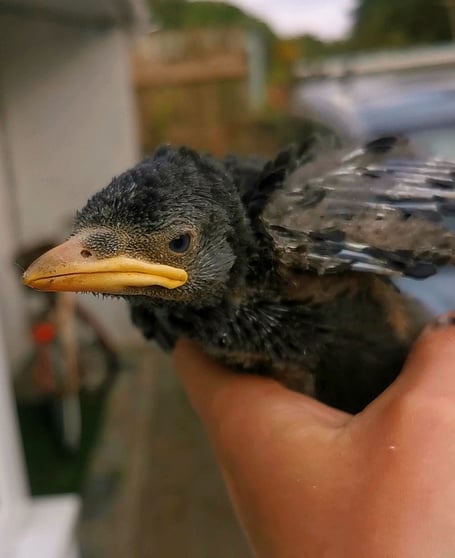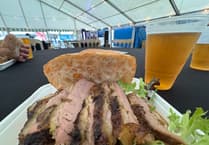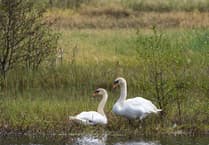Following on from last week’s article about monogamy, or lack of it, and ‘divorce’ rates in mammals and birds, this week focuses on a rare ‘love triangle’ between three ospreys that are sharing a nest in the Tweed Valley on the Scottish Borders.
The Tweed Valley Osprey Project was founded in 1998 to develop a breeding programme for these beautiful birds of prey.
They are still rarer in the UK than the golden eagle, but their population is slowly recovering and there are now approximately 250 breeding pairs producing around 260 chicks every year.
The ‘love triangle’ in the Tweed Valley comprises an older female whose previous partner did not return this year (ospreys spend the winter in Africa), and two younger birds – one female and one male.
The male has mated with both females, a form of polygamy known as polygyny, and they have laid four eggs between them.
This has all been closely observed due to the presence of cameras that are live streaming the birds’ activities, and this is the first time polygyny have been definitively recorded.
The birds seem to be getting along with each other apart from when the male delivers fish, when the older female asserts her dominance, takes the fish and flies off to feed; but then she sometimes returns with a portion for the other female to eat.
This extraordinary behaviour has huge scientific value, and the research will continue when the eggs hatch in a couple of weeks’ time.
Will the male be able to feed all his offspring and both females, or will the dynamics change and will one of the females leave the nest? You can follow the story via the Tweed Valley Osprey Project’s Facebook page.
Closer to home, we have chicks of our own we need to monitor now that we’re into baby bird season. The majority of phone calls we receive at this time of year relate to baby birds, with callers concerned about the birds’ welfare and safety.
However, if the bird is uninjured and has feathers, and it is able to hop or run, then it is a fledgling and it should be left alone.
Fledglings are almost always being watched over by their parents, and they need a couple of days on the ground for their flight feathers to develop properly. If you see a fledgling in imminent danger, either from a cat or passing cars, then carefully relocate it to a nearby garden where the parents will hear its cries.
The exceptions to this rule are baby pigeons, known as a squabs, and baby rooks – neither species will be fed by their parents once they are on the ground.
Rooks want their fledglings to ‘branch’ (climb up a tree) and the rookery will call out loudly to encourage the youngster to do this, but some can’t and will eventually die on the ground either because they fall foul of a predator or they starve to death (they can’t feed themselves for at least a month after they fledge).
It's often difficult to tell the difference between rooks, jackdaws and crows (known as the corvid family of birds) and so Manx Wild Bird Aid (MWBA) asks for a photograph to be sent to them so that they can identify the species and what help a fledgling may need.
MWBA’s contact telephone number is 242777, and we work closely with them to ensure the best outcomes for the birds.
If the baby bird does not have feathers (or has very few) then it is a hatchling or a nestling, and it won’t be able to survive out of its nest.
If you can locate the nest and reach it safely, and the bird is uninjured, then gently place it back into the nest, ideally using gloved hands.
Do not attempt to give very young birds food or water – they need specialist care, either from us or MWBA.



.jpeg?width=209&height=140&crop=209:145,smart&quality=75)
